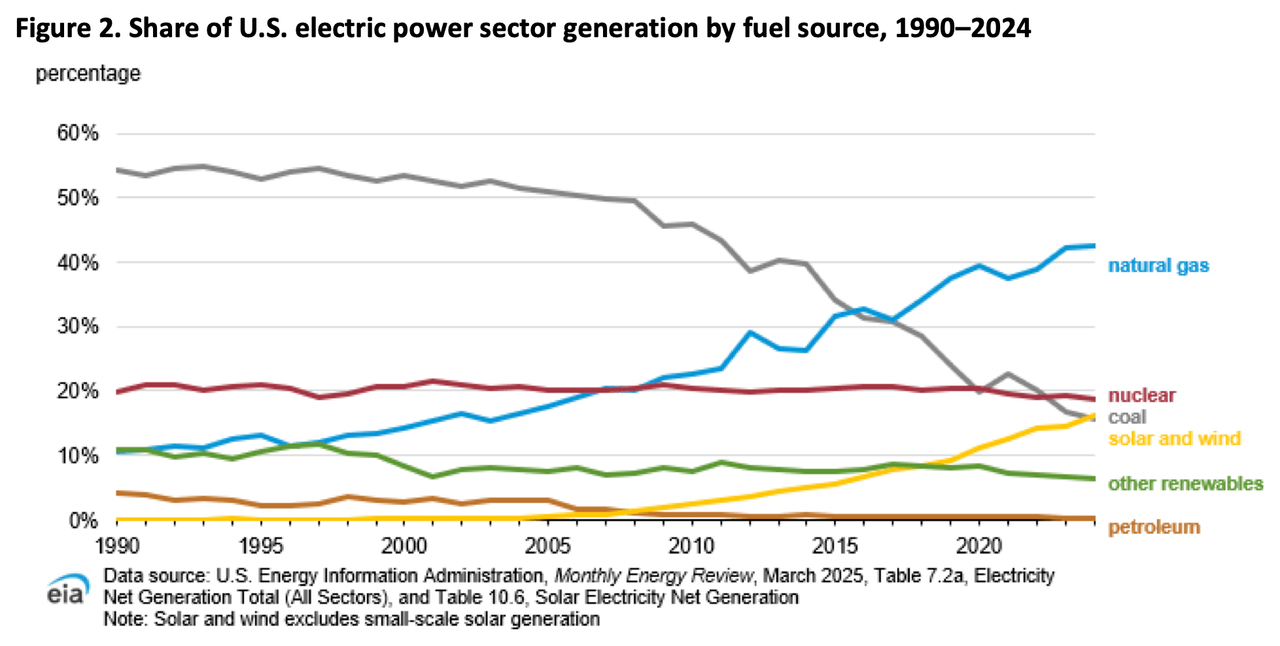https://www.eia.gov/environment/emissions/carbon/
U.S. Energy-Related Carbon Dioxide Emissions, 2024
Release Date: May 29, 2025 | Next Release Date: June 2026 |
Full report (PDF) |
Methodology and Supplemental Content
…
Key Findings
Electric power emissions remained flat as decreasing CO₂ from coal generation offset increasing CO₂ from natural gas
CO₂ emissions from the electric power sector remained mostly flat in 2024, increasing by less than 1% (6 MMmt). Although overall electricity generation increased by 3%, or 122 terawatthours (TWh), in 2024, changes in generation sources resulted in sectoral CO₂ emissions remaining near 2023 levels. Specifically:
- CO₂ emissions from coal-fired generation decreased by 3% (24 MMmt), but:
- CO₂ emissions from natural gas-fired generation increased by 4% (31 MMmt)
- Coal-fired electricity generation fell by 3% (22 TWh), but:
- Natural gas generation increased by 3% (59 TWh)
- Solar generation increased by 32% (53 TWh)
- Wind generation increased by 8% (32 TWh)
Although growth in natural gas-fired generation exceeded reductions in coal-fired generation, CO₂ emissions did not increase as much because natural gas emits less CO₂ per kilowatthour than coal when combusted.

(As you suggest) early gains came from closing down coal plants and opening gas-fired plants, and this continues to be a significant contributor.
However, please pay special attention:
- Generation by (utility scale) solar & wind (combined) increased more than natural gas in 2024 (85 TWh -vs- 59 TWh.)
- Generation by (utility scale) solar & wind (combined) exceeded generation by coal in 2024
- The majority of the increase in total generation in 2024 (85/122 TWh) was supplied by (utility scale) solar & wind (combined.)
- Looking at the growth rate, it appears clear that generation by (utility scale) solar & wind (combined) will exceed generation by nuclear in the very near future.
(These trends are likely to continue.)
All that being said, we still need to roll out new nuclear plants.
 = new reply since forum marked as read
= new reply since forum marked as read
